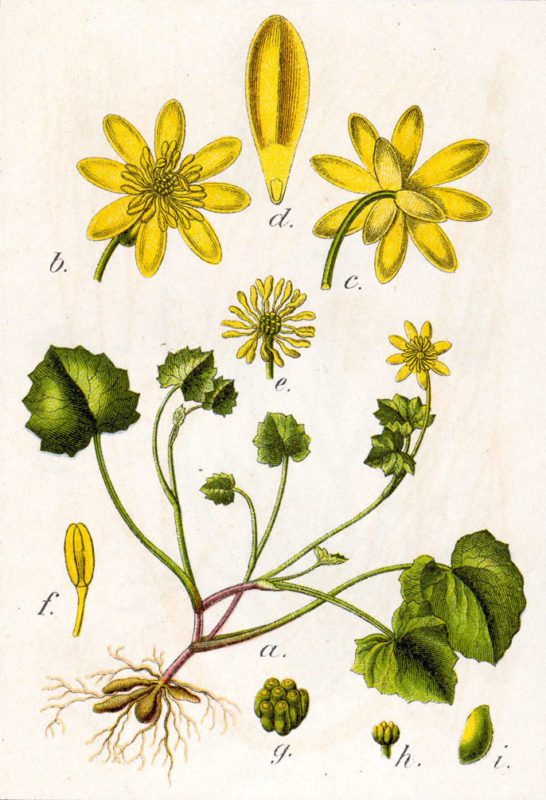The Yellow Month
March is the month when Spring arrives and nature starts to emerge from its winter sleep. Yellow is the signature colour of the month – there are celadines and daffodils flowering and the early butterfly, the Brimstone, can be seen alongside some Red Admirals and others that have been dormant over winter.
Lesser celandine is a member of the buttercup family. It has shiny, heart-shaped leaves and bears bright-yellow star shaped flowers in March or April. It is widespread in woods, hedgerows and on the banks of streams, but can also be found in gardens. It provides an early source of pollen and nectar for emerging bumblebees, small flies and small beetles. It’s a ground cover plant, rarely reaching more than 5cm (2in) in height.
The poet William Wordsworth wrote three poems about the celandine: The Small Celandine, To the Same Flower and To the Small Celandine:
“There is a Flower, the Lesser Celandine,
That shrinks, like many more, from cold and rain;
And, the first moment that the sun may shine,
Bright as the sun itself, ’tis out again!”
They are also mentioned in The Lion, the Witch and the Wardrobe by CS Lewis – When Aslan returned and the woodland turns from winter to spring, the ground was covered in all directions with yellow celandine flowers.
Celandine leaves are high in vitamin C and have been used in salads and to prevent scurvy.
The Brimstone butterfly was first named in 1699. Brimstone, a sulphur yellow crystal that forms around volcanoes and was used medicinally in the unpleasant “brimstone and treacle” recipe in Dickens, is the perfect name for this bright yellow butterfly. It can be found all over England and can often be seen flying along roadsides and hedgerows. It’s also common in gardens, woods and parks so look out for it on Spring walks at Lydiard!

Drawing of the Lesser Celandine by Johann Georg Sturm (Painter: Jacob Sturm) – Fig. from book Deutschlands Flora in Abbildungen at http://www.biolib.de, in the public domain.